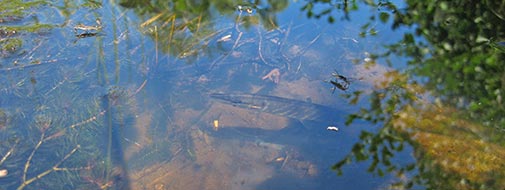Research area 1: Biodiversity

Recent research has emphasized the importance of riparian ecosystems as centers of biodiversity and links between terrestrial and aquatic systems as being particularly important. Riparian ecosystems also belong to environments that are most strongly disturbed by humans and are particularly in need of restoration to maintain biodiversity and ecological integrity. The riparian system is a transition zone between land and water ecosystems and it is disproportionately plant species-rich when compared to surrounding ecosystems because many species with variable adaptations to water drought and flooding can segregate their appearance and abundance across this land to water gradient.
Along Øle Å the riparian vegetation is largely limited by the Norway spruces. This is manily due to deficiency of light and water, in combination with a thick layer of hardly decomposed needles. The needles are also a poor food source for aquatic macroinvertebrates, which thus might be limited in number in Øle Å.
Our research is based on yearly monitoring of riparian plants, aquatic plants, fish population, aquatic macroinvertebrates and breeding birds.
